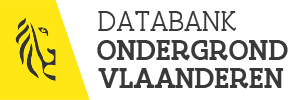250000
Type of resources
Available actions
INSPIRE themes
Provided by
Years
Formats
Representation types
Update frequencies
status
Scale
-
Op basis van de resultaten van een intensieve bodemkartering gedurende de jaren ’50 tot ’70 werd de Belgische bodemkaart opgesteld. Deze Belgische bodemkaart steunt op het Belgische bodemclassificatiesysteem. Het is een nationaal systeem dat uitsluitend voor de Belgische bodems werd opgesteld. De bodemkaart van België volgens het internationale World Reference Base (WRB) bodemclassificatiesysteem is een vertaling van de bodemkaart volgens het Belgische bodemclassificatesysteem. WRB bestaat uit 2 detailniveaus: enerzijds de 32 'Reference Soil Groups' (RSG’s) en anderzijds een combinatie van RSG’s met voor- en achtervoegsels, i.e. ‘qualifiers', die toelaten om een individueel bodemprofiel te classificeren. Door het gebruik van ‘Reference Soil Groups' (gekleurde vlakken) en ‘Main qualifiers’ (blauw omlijnde polygonen met labels) kan de belangrijkste informatie uit de bodemkaart van België vertaald worden naar het WRB-systeem. Om de informatie over textuur, drainage en substraten niet verloren te laten gaan zijn nog 3 deelkaarten toegevoegd ‘Textuurkaart’, ‘Drainage qualifiers’ en ‘Abruptic/Ruptic qualifiers’. De ‘Textuurkaart’ geeft de textuurklasse weer zoals die voorkomt op de bodemkaart van België. De kaarten zijn voorlopige versies en zijn het resultaat van het project ‘Ontwikkelen en toepassen van een methodiek voor het omzetten van de Belgische bodemkaart volgens het internationaal Word Reference Base systeem’ uitgevoerd door S. Dondeyne, J. Deckers en E. Van Ranst van de K.U.Leuven en de U.Gent. Meer uitleg vindt u in het rapport van de studie (https://www.dov.vlaanderen.be/themas/bodem). Opmerkingen of suggesties zijn welkom via dov@vlaanderen.be.
-
The Belgian soil organic carbon (SOC) stock maps for topsoils (0-30 cm) were composed of 2 regional SOC stock maps. For the regional maps a different approach was used for agricultural land as compared to forest. The maps are based on digital soil mapping approaches using empirical models calibrated to predict the SOC stock and using covariates that are available at a sufficient resolution at the regional scale. All maps are strongly dependent on the Belgian Soil Map (texture and drainage parameters). The regional maps were compiled at a finer resolution (10m x 10m and 40m x 40m grid cells). Next they were joined (40m x 40m grid cells) and finally scaled up to the required 1 by 1 km grid cells. This was done using the following tools: block statistics (mean), mosaic to new raster (mean), project to raster, block statistics (mean), resample (nearest neighbour) and project raster. Given the different origin of the individual maps, the uncertainty varies between maps. For instance, a map of the 90% confidence interval of the SOC stocks was produced for agricultural soils in Wallonia based on a Monte Carlo Approach taking into account both the measurement and the model uncertainties. For Flemish forest soils, spatial and analytical uncertainties were taken into account using bootstrapping techniques. For Flemish agricultural soils, the uncertainty reported is the model uncertainty on point estimates for each data point, in which the estimated model parameters are simulated 1000 times as being independent normal distributed variables using their model estimation and standard error as distribution parameters. No additional uncertainty is taken into account for the conversion functions that use the stochastic variables "bulk density". The SOC stock maps are the first comprehensive maps for Belgium integrating grasslands, croplands and forests. There are two versions of the SOC stock maps for Belgium: 1) resolution of 40m x 40m in the coordinate reference system Lambert72 and 2) resolution of 1km x 1km in the coordinate reference system WGS84. The metadata are available and allow assessing the uncertainties of the stock estimates in the different component maps.
-
Voor het Vlaamse Gewest werd de Belgische bodemkaart omgezet naar WRB-2014, de 3de editie van het internationaal bodemclassificatiesysteem World Reference Base. Het resultaat ziet u in de kaartlaag ‘WRB Soil Units 40k: Bodemkaart van het Vlaamse Gewest volgens het internationale bodemclassificatiesysteem World Reference Base op schaal 1:40.000’. De kaartlaag op schaal 250.000 is een generalisatie van deze kaartlaag op schaal 1:40.000. De gegeneraliseerde kaartlaag bevat de dominante (meest voorkomende) Reference Soil Group (RSG) en de bijhorende Principal Qualifiers (PQ) en twee geassocieerde RSG’s met hun PQ’s (tweede en derde meest voorkomend) per kaarteenheid.
 DOV metadata zoekdienst
DOV metadata zoekdienst